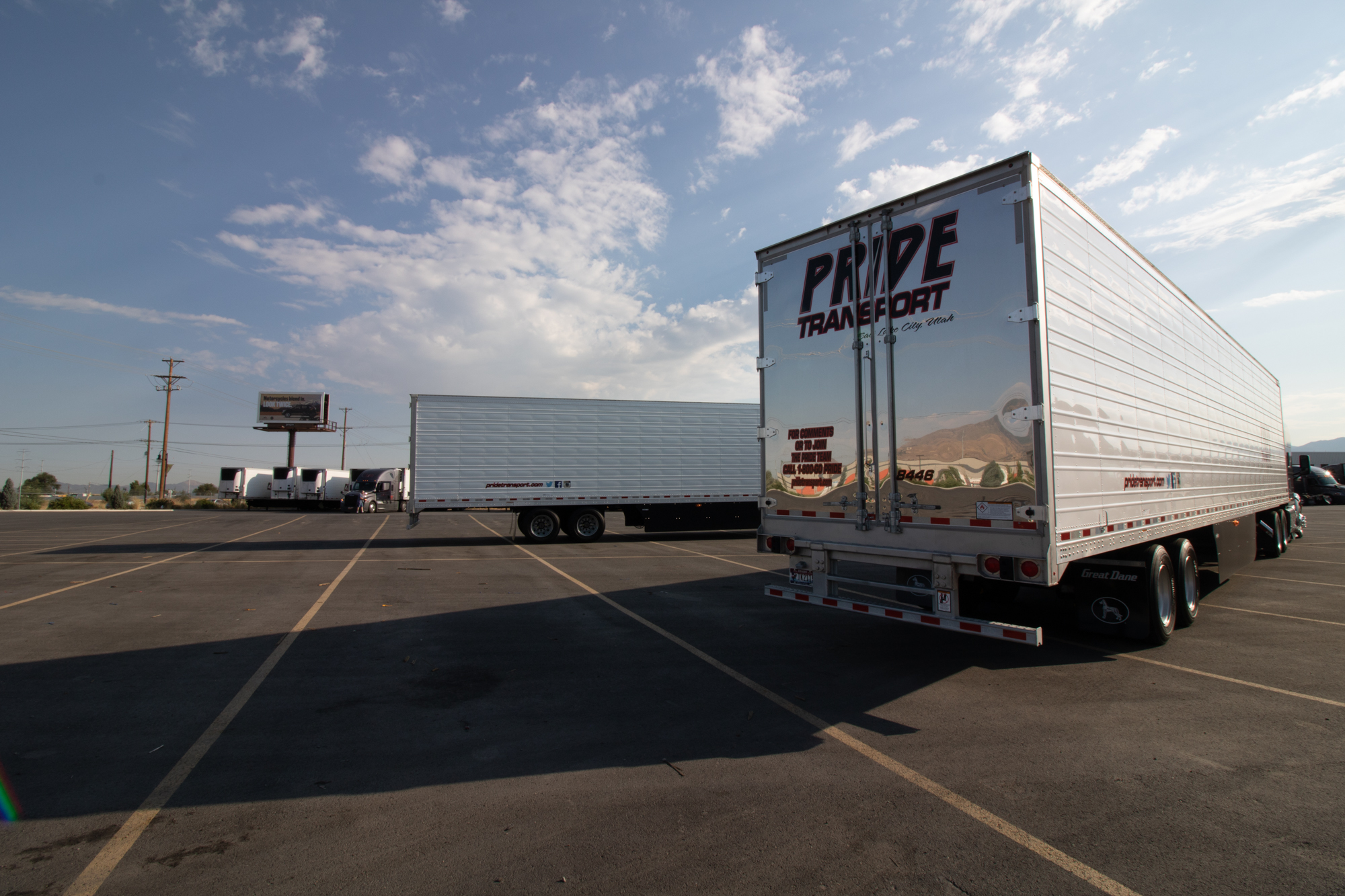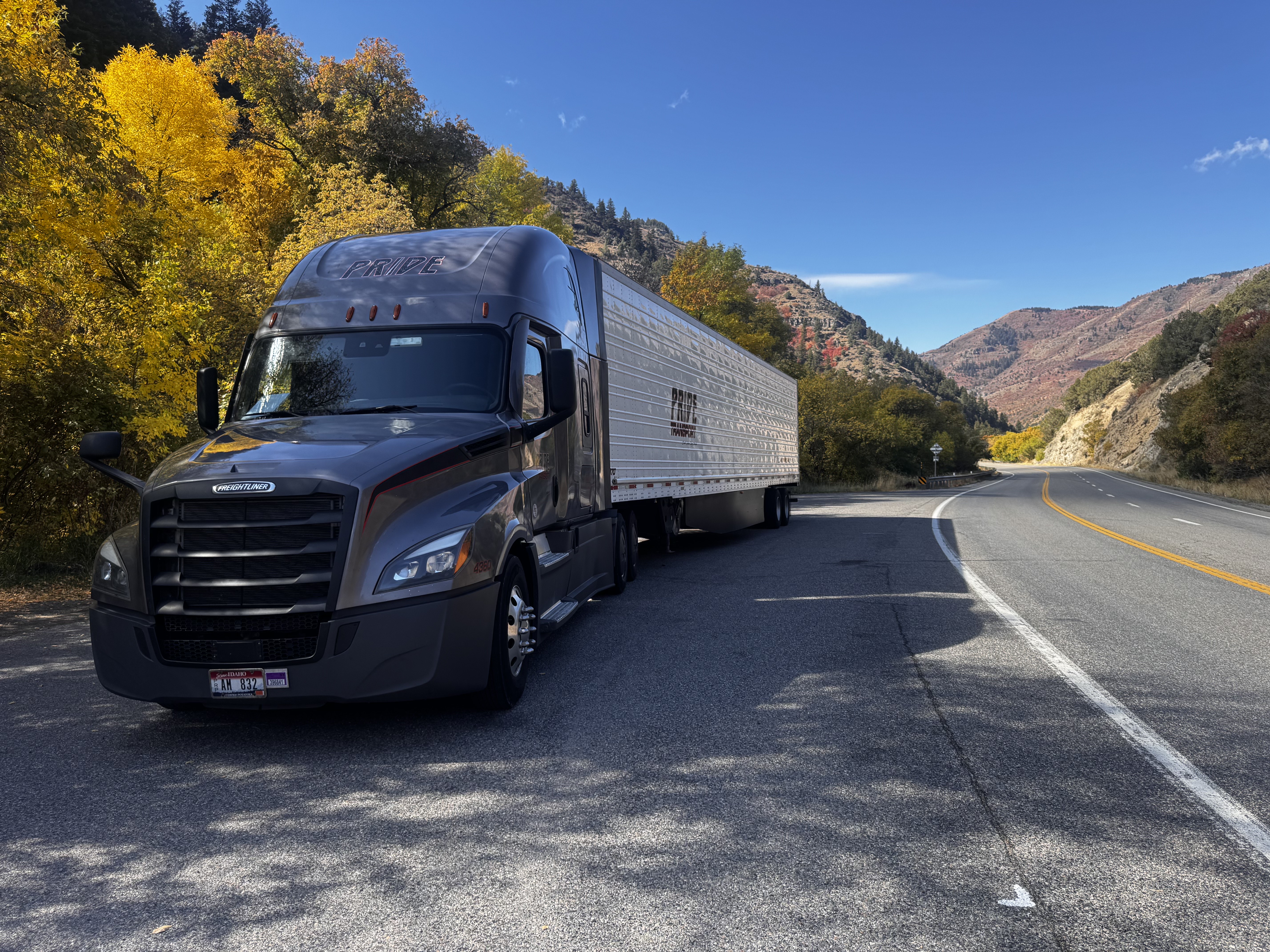by Pride Transport | Nov 14, 2025
At Pride Transport we know that for professional truck drivers the road never stops and neither does the need to stay inspection ready. If you ever find yourself pulled in for a Level 1 Inspection under the Commercial Vehicle Safety Alliance (CVSA) or Federal Motor Carrier Safety Administration (FMCSA) guidelines, being prepared makes all the difference. This blog will walk you through exactly what a Level 1 inspection involves, how you as a driver can prepare, and what inspectors are looking for so you can face it with confidence, protect your CSA score, and keep your job secure.
What Is a Level 1 Inspection?
A Level 1 inspection, also called the North American Standard (NAS) inspection, is the most comprehensive roadside review for commercial motor vehicles (CMVs) and drivers.The inspection covers both the driver’s credentials, hours of service and documentation as well as the vehicle’s mechanical systems and safety features.
It's not something you’ll casually breeze through. The checklist runs in the ballpark of 30–90 minutes, and consists of roughly 37‑steps. While not every inspection turns into a full Level 1, when it does you want to be ready.
Importantly for you as a driver: a clean Level 1 inspection helps maintain a positive safety profile for you and your carrier. A failed inspection can result in out‑of‑service orders, fines, and damage to your CSA standing.
What Inspectors Are Looking For
When the inspector approaches your rig for a Level 1 inspection, they will split their focus between driver‑related compliance and vehicle mechanical safety. Here’s a breakdown of what they will check and why each part matters to you.
Driver‑Related Compliance
- Valid Commercial Driver’s License (CDL) with the proper class and endorsements.
- Current medical examiner’s certificate (DOT physical) and proof of qualification.
- Hours of Service (HOS) records or Electronic Logging Device (ELD) logs that comply with the regulations.
- Seat belt usage. An inspector will verify you are wearing it.
- Drug and alcohol compliance, including being enrolled in the carrier’s testing program and not operating under influence.
- Driver Vehicle Inspection Reports (DVIRs) from your previous trips, and any defects you or the carrier noted and corrected.
Why this matters: Document‑related violations can be just as costly as mechanical ones. Also when you keep your paperwork current you show that you and the carrier operate safely, which reflects positively on your job security.
Vehicle‑Related Mechanical and Safety Systems
- Inspectors will dig into your rig from bumper to bumper. Some of the key items they will check include:
- Brakes: This includes service brakes, parking brakes, air or hydraulic system (as applicable), slack adjusters, hoses, drums or discs, and leaks.
- Tires and wheels: Correct inflation, acceptable tread depth, no significant cuts, hub oil seals no leaks, rims and wheel fasteners properly secured.
- Steering mechanism: Tie rods, drag links, pitman arm, front axle beams, all should be secure and within wear limits.
- Suspension system: Spring assemblies, U‑bolts, shocks, air suspension (if equipped) must be intact and properly mounted.
- Lighting and reflectors: Headlights, tail lights, turn signals, clearance lights, reflectors and retro‑reflective tape all must work and be visible.
- Fuel system and exhaust system: No visible leaks, fuel tanks securely mounted, proper exhaust discharge, no carbon monoxide risks in the cab.
- Frame and body components: No cracks, holes or structural defects in the truck frame, box, van, or open‑top trailer bodies.
- Cargo securement (if applicable): The load must be properly braced or tied down, tarps fixed, and nothing obscuring the driver’s view.
The overarching reason: Any defect in these systems can lead to accidents, breakdowns, or regulatory violations. Keeping everything in shape protects you, your cargo, and others on the road.

How to Prepare
Preparation is the key to turning what could be a stressful moment into a routine check. At Pride Transport we recommend these practical steps that drivers can take on a regular basis.
- Make daily pre‑trip inspections non‑negotiable
Treat your pre‑trip inspection like you treat your highway time. Walk around the rig every morning and check lights, tires, brakes, coupling devices, cargo securement, etc. This habit lets you catch issues before an inspector does. When everything is in good order you’ll feel confident rather than worried. - Keep all your credentials and records organized and current
Have your CDL, medical certificate, HOS logs/ELD logs, DVIRs, and any other required paperwork in a clear folder or electronic system that you can access quickly. If you are pulled in and your paperwork is missing or outdated the inspection can go south fast. When you are ready it reflects well for both you and Pride Transport’s safety culture. - Stay consistent with maintenance and condition of the rig
If you see a low tire, a broken light, a fluid leak, or anything suspicious, report it immediately so the maintenance team can fix it. A well‑maintained rig is less likely to draw inspector attention or trigger out‑of‑service conditions. - Keep the cab and vehicle doors clear and professional
While cleanliness isn’t technically part of every checklist, a tidy truck suggests that you pay attention to details. Inspectors notice. Also, a clean workspace reduces distractions and improves your own focus during inspection stops. - Know what to expect and stay cooperative during the inspection
When stopped, pull over safely, turn off your engine, set your parking brake, and be ready to provide the requested documents. Stay calm, polite, and responsive. A cooperative attitude will help the inspection flow smoothly. - After each trip: review DVIRs and repair records
At the end of your day check your DVIR for any defects you marked, and make sure they have been addressed. If not, bring them to your Pride Transport dispatcher or maintenance team right away. Unresolved defects show up in inspections and can hurt your CSA score.
Why Staying Inspection‑Ready Protects Your CSA Score and Job
Your consistent readiness for inspections plays a direct role in keeping your CSA score clean and that matters for you personally as a driver and for Pride Transport.
- A violation found in a Level 1 inspection gets reported and can add to your carrier’s safety profile. Frequent or serious violations can trigger increased scrutiny, audits, or additional inspections.
- A clean inspection means you may receive a CVSA decal that shows your vehicle passed and is valid for about three months, which often reduces the likelihood of further inspections in that period.
- For you as a driver: having a strong inspection record supports your reliability, safety reputation, and career longevity. At Pride Transport we value drivers who are proactive, conscientious, and inspection‑ready.
- For your company: safe operations help maintain contracts, keep insurance premiums manageable, ensure that we remain compliant as a carrier and all that translates into job security for our drivers.
Facing a Level 1 inspection does not have to be a moment of stress. If you adopt daily habits, pre‑trip inspections, organized paperwork, regular maintenance communication, and a professional mindset you can turn what seems like a high‑stakes moment into an ordinary part of your day. At Pride Transport we believe that safety, preparation, and professionalism go hand in hand.
Drive with Pride Transport
If you’re ready to take the next step in your career with a carrier that values safety and supports its drivers, consider driving for Pride Transport. We are committed to offering you the tools, training, and environment to keep you safe, compliant, and on the road. Apply today!
